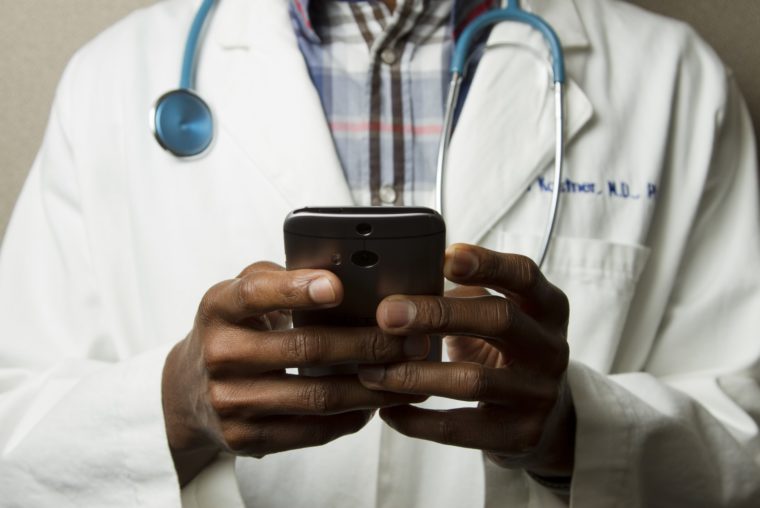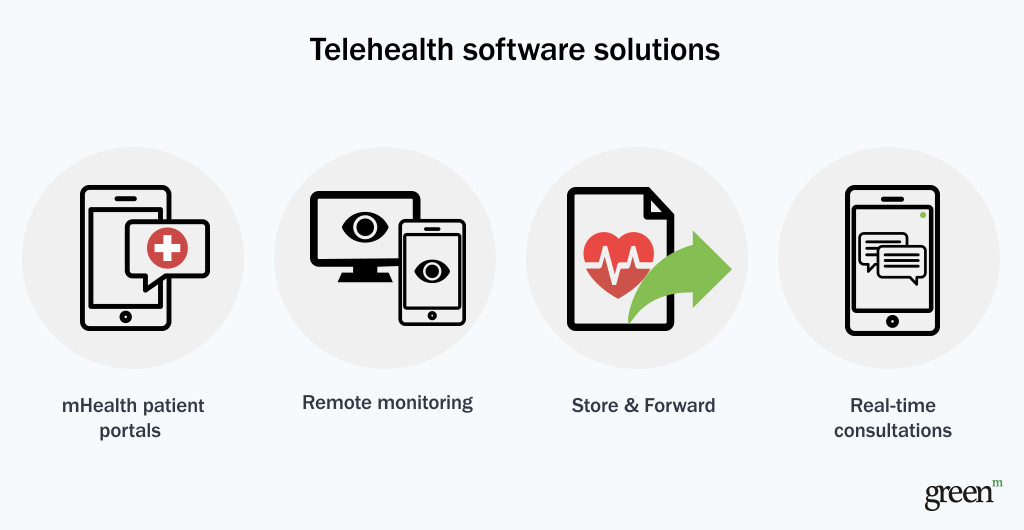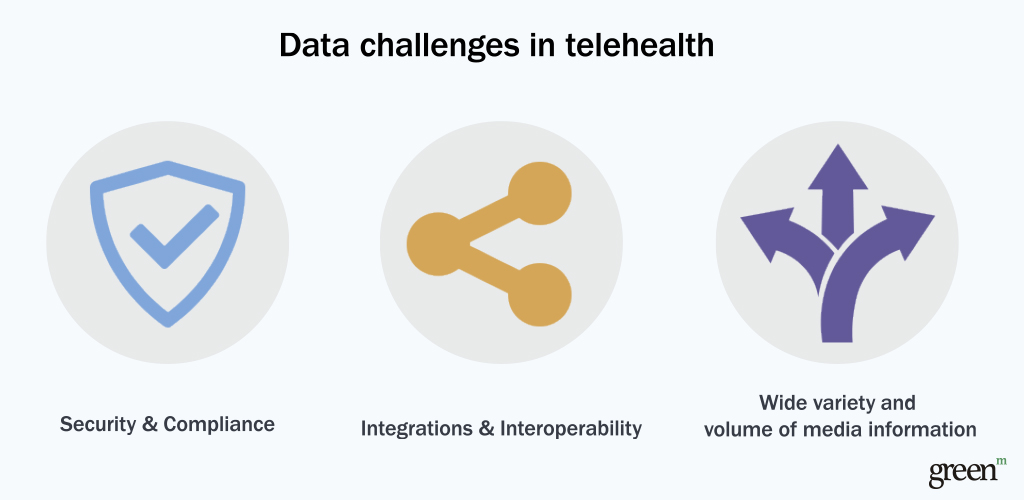Big Data Analytics in Telemedicine: Usage and Challenges

Healthcare never stands still. It constantly evolves to meet the needs of patients, changing medical requirements, and most recently, global pandemics. Partly in response to the ongoing crisis is a surge in an already popular area of healthcare; telemedicine.
Telehealth or telemedicine helps provide clinical support to patients from remote locations through telecommunications and information technology.

Based on recent studies, it’s expected that in 2020, the telehealth market will be worth around $10 billion, and experience high double-digit growth compared to the same period last year. It’s expected that about 80% of this rapid growth will be in response to the recent COVID-19 pandemic.
Moreover, after COVID-19, hospitals in the United States plan to invest more in telehealth solutions and related training for doctors to increase doctors’ awareness of telemedicine.
Although telemedicine has many benefits, there are some pitfalls. The good news is that you can overcome these problems by having a clear strategic direction. In this article, we want to share with you several ways how you can avoid these difficulties.
Telehealth software solutions are a part of the ‘new normal’
Since COVID-19 is widespread and is still considered highly contagious, most medical services have turned to telehealth as an effective way of delivering non-emergency healthcare to patients who can’t or shouldn’t have in-person appointments.

Providing contactless means for the preliminary examination of patients, telemedicine gives doctors the opportunity for primary care (which is billable in countries such as the US). Also, it helps to send only those patients who need urgent care to emergency departments, which significantly minimizes the risk of contact with other patients and medical personnel.
Moreover, we are confident that after a universal vaccine for COVID-19 is found, this technology and strategy will bring outstanding dividends. Since the required technologies are already widely available, and COVID-19 has significantly influenced consumer behavior, the willingness of the healthcare industry to invest in telemedicine will be crucial going forward.
Consequently, healthcare providers need to have the necessary infrastructure with operational capabilities as soon as possible to provide patients with telehealth services. Besides, we also believe that healthcare models will be completely overhauled to introduce telemedicine and improve the current state of many medical facilities.
Also, thanks to telemedicine, we have the most popular solutions and services now, such as:
- mHealth (patient portals on smartphones and tablets)
Patient portals and mHealth apps provide patients with access to their medical information or status. It includes results such as medical tests, immunization records, medication lists, doctor notes, and much more.
- Remote monitoring (sensors on the device or patient interface to exchange information with the provider)
In this case, doctors can easily monitor most of the patient’s health indicators remotely. Considering the instances where patients cannot reach the hospital due to poor health or their location. This is invaluable and can dramatically improve healthcare outcomes, especially when smartphone sensors can pick up on lifestyle data that doctors need to know about (such as how much exercise people are getting).
- Saving and forwarding (survey data, verification of uploaded laboratory test results, and more, can be saved and sent to healthcare providers and pharmaceutical companies, as required)
When it comes to determining when patients need new medicine, this helps by using an inventory model that combines continuous analysis with production and distribution for a supply chain from pharmaceutical companies, as well as receiving data from patients.
- Real-time consultation
Doctors and other medical professionals can provide patients with remote diagnostics and various clinical services in real-time using patience’ health data, and video call consultations.
Examples of telemedicine software companies
Many healthcare providers are actively using telemedicine services to achieve their goals and help customers. For example, a mental health provider Sondermind uses a straightforward scheme to connect you with a therapist. Patients outline the help they’re looking for, and you can be quickly connected to the most suitable therapist for your needs.
Another great company is Tytocare. It provides patients with the 24/7 medical exams with a doctor, from the comfort of home. The patients get real medical exams, which include examining the ears, lungs, heart, throat, skin, abdomen, and temperature. Remote board-certified physicians, with each patient receiving a diagnosis and prescription within minutes.
Beam Health also allows doctors and patients to connect through a medical platform. It allows patients to see doctors without taking time away from their work, and families will lead to more frequent appointments and better health outcomes. Simply put, engaged patients are healthier and happier.
The RediClinic Express kiosks deliver a virtual health assessment with integrated medical devices and point-of-care testing. In this way, clients are able to speak with RediClinic clinicians directly via a secure, two-way high-definition audio/video connection.
Pager allows clients to seamlessly interact with their care team anytime, anywhere, via chat, voice and video. The company brings patients and their care team together in a single chat to make smarter and faster decisions.
Top data analytics challenges in telemedicine
The advantages of telemedicine lie in its ability to become a real medical care option or practical extension for patient management. But several points can hurt patient care.

Challenge 1 in telehealth: data security & compliance
The HIPAA (Health Insurance Portability and Accountability Act) privacy policy creates specific standards for the protection of medical records of patients in healthcare systems, including telemedicine. However, due to the lack of universal data protocols in telehealth, which should protect users’ privacy and ensure a proper path for the data collected, companies need to work with developers and IT firms to implement the most effective and secure communication protocols.
Why is this crucial? For healthcare providers, it’s essential to use secure communication protocols with strict adherence to all HIPAA requirements for interactions between applications.
Challenge 2 in telehealth: integrations & interoperability
There are numerous difficulties when it comes to connecting the Provider with Patient histories, due to EHR integration issues. Also, due to the absence of a single system for scheduling and consulting results, it’s so important to have seamless integration across every system. Alongside the lack of universal standards across the payer system, data interoperability is vital for sufficient reimbursement and incentives in the healthcare system.
Read also: Boosting Telehealth Solutions with Self-Service Analytics
Why is this crucial? TeleHealth’s interactive patient engagement and education solutions provide enhanced integration with your existing hospital systems. It enables hospitals and healthcare systems to achieve superior results and operational efficiencies by optimizing and standardizing routine care tasks, such as patient safety education, and discharge planning.
Challenge 3 in telehealth: wide variety and volume of media information
There are vast and massive data flows that are not useful or easily maintained (e.g. continuous monitoring of temperature and blood pressure). However, multimedia comes with massive potential for healthcare providers; which are opportunities that could be lost without the right kind of big data IT support.
Why is this crucial? IT infrastructure costs need to be reduced, to allow scalability and decrease of opportunity costs for better telehealth adoption.
Telehealth data analytics: key takeaways
As you can see, delivering healthcare through telehealth solutions is our future. In addition to the benefits that doctors and healthcare administrators receive from telemedicine apps, they provide the best option for patients now.
Telehealth apps allow you to easily schedule appointments, conduct frequent consultations, and meet with your doctor without leaving your home and reduce significant amounts of money. And that is why it’s crucial to think about data challenges in telehealth, especially if you want to provide telehealth/telemedicine analytics solutions in the future.
Top 5 handpicked healthcare industry insights, cases and business recommendations in your inbox every two weeks. Hit the SUBSCRIBE button below to learn about health tech with our digest!
References:
1. The virtual health evolution
https://www.cerner.com/perspectives/the-virtual-health-evolution
2. Key Features to Look for in Telemedicine Software
https://www.softwareadvice.com/resources/key-telemedicine-software-features/
3. 8 Top Telemedicine Companies in 2020
https://www.plugandplaytechcenter.com/resources/8-top-telemedicine-companies-2020/
4. How to choose the right telehealth vendor for your practice
https://blog.evisit.com/choose-right-telehealth-vendor-practice
5. Telehealth and telemedicine: how the digital era is changing standard health care
6. SMART App Launch Framework
http://www.hl7.org/fhir/smart-app-launch/
7. How does Data at the Point of Care reduce your burden and help you improve care?
8. Telehealth dashboard: leverage reporting functionality to increase awareness of high-acuity emergency department patients across an enterprise practice
https://informatics.bmj.com/content/26/1/e100093
9. The Telehealth Market in US to Reach Revenues of Over $25 Billion During the Period 2020 −2025 – Market Research by Arizton
10. This IT Expert Says Telemedicine Will Be Part Of The ‘New Normal’
11. Telehealth interoperability
https://vitelnet.com/wp-content/uploads/2019/05/Telehealth-Interoperability-white-paper_FINAL.pdf
12. Comparing and contrasting outpatient and inpatient providers’ use of telehealth
https://medcitynews.com/2019/08/comparing-and-contrasting-outpatient-and-inpatient-providers-use-of-telehealth/
GreenM
GreenM helps tech companies to scale and accelerate the time to market by taming the data deluge and building secure, cost-effective, and easy-to-use analytics platforms.Tags
- Better Services
- Business
- Empower Customers
Content
- Telehealth software solutions are a part of the ‘new normal’
- Examples of telemedicine software companies
- Top data analytics challenges in telemedicine
- Challenge 1 in telehealth: data security & compliance
- Challenge 2 in telehealth: integrations & interoperability
- Challenge 3 in telehealth: wide variety and volume of media information
- Telehealth data analytics: key takeaways






